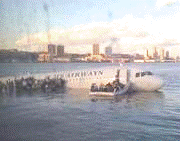Bird Strike Committee Proceedings

Bird Strike Committee-USA/Canada Joint Annual Meeting: 10th (2008)
Date of this Version
8-2008
Document Type
Article
Abstract
The average strike rates at Australian airports are 4.5, 6 and 0.9 per 10,000 movements for different category airports. These rates reflect the diversity and density of Australian avifauna as well as the littoral distribution of most of our major airports. In the past, isolated and piecemeal management approaches such as fixed position scare devices and dispersal by poorly trained and equipped patrols were ineffective at managing strike risk. Here we describe a practical, cost effective and integrated approach that commences with audit, habitat review and field surveys and is followed by risk assessment and mitigation strategies that are reviewed according to quantifiable targets. Risk assessments are based on both historical strike and current survey data. Mitigation strategies include on and off airport habitat management, regional wildlife population assessments, surrounding landuse refinement, airport staff training programs in addition to expanded options for active dispersal. At each airport the process is coordinated by a local wildlife consultative committee which comprises operators, airport tenants, air traffic control, regulators and local land users and authorities. Two case studies using this approach and spanning the period 1997- 2007 are presented. At one airport strikes reduced by 88% over the first two years of the integrated program. At a second airport strikes reduced by 30% and risk indices reduced by 50% in the first two years of the program. However, in the following 5 years, while strike risk and damaging strikes remained steady, total strikes steadily increased.


Comments
Abstract of paper presented at Bird Strike Committee USA/Canada Meeting, Lake Mary and Sanford, Florida, August 18–21, 2008.